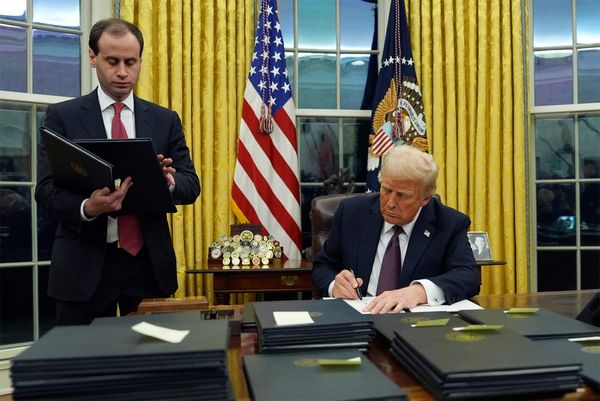
Bitcoin should be in the bin by now. Why on earth isn’t it?
A great cleansing fire has swept through markets, removing all the crap that didn’t make sense from the stupid years. Tesla: down. Private equity: down. Dogecoin, down. NFTs: finished. Bored Apes: extinct. Tokens of all kinds: in the bin.
This is exactly as theory predicts. Assets with a high proportion of hope or fraud were winners in the period of ultra-low rates. Risk tolerance is inversely proportional to the level of interest rates. So is patience. In those heady days, people didn’t need a business model that would pay off in nine months to invest. Instead, they wanted to get in on the ground floor of the next mega-trend, even if it made no sense.
So we got a lot of weird ideas. Like the Bored Ape Yacht Club — a group of cartoon pictures of apes that sold for prices that don’t make sense. And that last sentence isn’t even true because it wasn’t even the pictures that sold; it was a receipt that said you were the owner of the picture. The picture was — and continued to be — online, visible to anyone, screen-shottable, right-clickable and downloadable. I’m comforted by the fact that NFTs are done for now.
In the zero-interest rate environment, dumb money was chased by even dumber money. The people with the second kind of money made the people with the first kind look like prescient geniuses. That’s how bitcoin went up. Even I piled into bitcoin at one point, and although I arrived late and got out early, I made a profit.
It wasn’t just online stuff. A number of asset classes went absolutely crazy and are now in decline. Art: a Picasso went to auction at Sotheby’s in New York last week with an estimated price of $18 million to $25 million but sold for $13.6 million. Watches: the Patek Phillipe index rose from US$70,000 pre-pandemic to US$196,00 in 2021 and has now slumped to $127,000.
I’ve been of the view that bitcoin is of a piece with all the dumb schemes of the zero-interest rate era. It’s rise? A lot of hot air pumped up by cheap money. Its demise? Inevitable. But if so, why has it doubled in value this year (and more than doubled in AUD terms!)? Bitcoin is back at levels it exceeded only briefly in the frothiest, maddest months of 2021 and 2022, as the next chart shows.
I bought bitcoin in 2020 but was not then and am not now a true believer. I was a speculator. I got out because I figured it would fall precipitously. It is open source and therefore replicable, and alternative cryptocurrencies were proliferating. It couldn’t hold its value, I thought. I was wrong. I wish I’d speculated again. Kudos to anyone who did.
I doubted bitcoin and I thought it would crash, but if I want to take myself seriously I have to be led by evidence, not comfortable theories.
When the facts change I change my mind. What do you do?
The facts are: bitcoin’s price has risen in 2023 even as other asset classes have collapsed. There are two types of explanation: either the market is rigged, or bitcoin is showing genuine staying power.
Could it be rigged? Yes. Bitcoin ownership is extremely concentrated, with 0.01% of wallets holding 60%. It is not much like land, which has dispersed ownership. Note: this is not a prima facie reason to sell bitcoin. If those powerful people have propped up the market so far, perhaps they will continue to do so. But it does mean you may not get warning of a market collapse. If one related company fails or one person you never heard of gets divorced, assets might need to be sold.
One reason to think the bitcoin market may be manipulated is it does not always have the shape of a “random walk”. A random walk is a jagged pattern that freely trading markets exhibit. The Australian dollar moves in a jagged pattern, for example, whereas bitcoin often holds tight to certain levels, trading in a limited range over a long period before changing to a new level. This suggests someone holding the price at these levels with sufficient purchases to prop up the price, just as our dollar was fixed at a certain price before it was floated. Always be suspicious of a flat spot in markets.
But maybe bitcoin is the real deal. In every bubble there is air, but also soap. Maybe it’s the soap? Maybe it lasts when the rest of the crypto bubble pops, carried into the mainstream financial system by virtue of brand recognition and a hunger for a new asset class?
Here’s an argument I heard. Young people are crypto’s biggest adopters. As people age, they gain wealth. Even if young people reduce their relative exposure to crypto over time (say by cashing out and buying a house) they will continue to want to own some, thereby adding to demand. So 20% of the net wealth of all 20-year-olds is less than 1% of the net wealth of all 55-year-olds, and so generational change will prop up bitcoin. I don’t know if I believe that but I do suspect it can be a self-fulfilling prophecy. The more its price is successfully maintained, the more people will want to buy in.
Bitcoin is still moving towards the centre of the mainstream financial system, with an exchange-traded fund a prospect that would allow normal people to trade bitcoins on the sharemarket. That could create major demand.
Also, bitcoin is “mined” at the rate of 900 a day and the amount newly mined halves every so often. The next halving is in April 2024. At that point, supply will be cut in half: 450 new bitcoins each day. Only 21 million will be created, ever, and 19 million are mined already (many of which are lost).
New supply is vital to keep prices in check in any market. The reason that Picasso’s painting sold for so much? The old man is dead. The reason a house with a view of the water in Sydney is so pricey? They’re not releasing new lots of land in Potts Point. Limiting supply is a clever design mechanism of bitcoin.
In a perfect theoretical world, a person could argue bitcoin is dead and finished. But we have to contend with reality. Consumer enthusiasm (or shadowy powerful interests) could overcome its base uselessness and, intersecting with its limited supply, propel it to the stratosphere. And if that’s going to happen it would be a shame to be betting against it.







